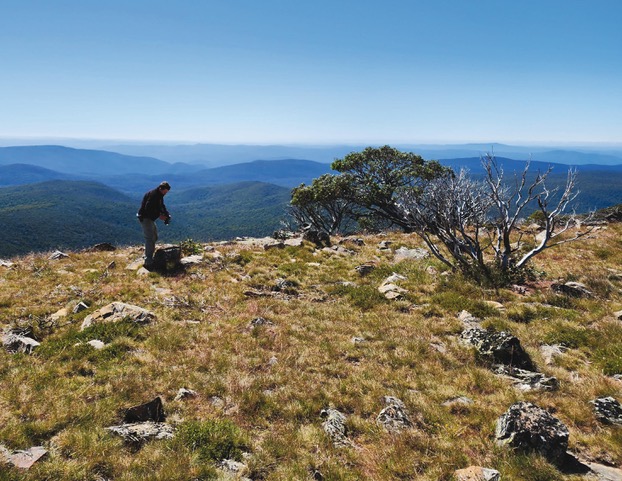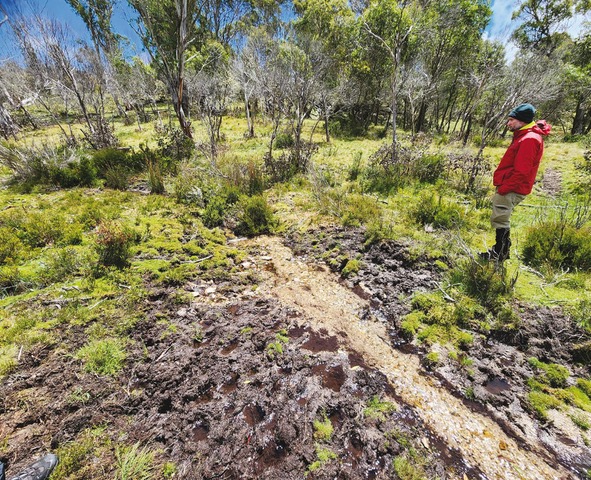September is National Biodiversity Month, which hopefully means biodiversity is in the spotlight a little more than it should be every other month.
THE BushBlitz programme, a partnership between the Federal Government and some large Australian organisations, was set up in 2010 to document Australia’s biodiversity. This year, a BushBlitz expedition involving the Botanic Gardens of Sydney surveyed the Australian Alps, an area which has widely diverse plant life but is also under multiple threats.
There are very few true alpine areas in Australia and many species in the Australian Alps are endemic to the area, especially in those areas above the tree line covered by winter snow. The expedition experienced the unpredictable weather of the region, including a February snowfall! They discovered some new species of plants and spiders, which is exciting but also shows there is still much to learn about Australian biodiversity. They collected plant material to propagate for planting in botanic gardens to conserve rare or threatened species, to increase the range of plants displayed in the gardens or to investigate plants that might have horticultural potential.
Collecting baseline data on current species and where they grow was also done. This is especially important given the inevitable changes that will occur because of climate change and invasive species. As the temperature rises, species adapted to an alpine environment may need to move to higher altitudes, but there may be nowhere to go! Extreme weather events, which many people in our communities have recent and unpleasant memories of, are an added threat to survival. Various invasive species, such as feral animals, Phytophthera root rot and weeds need to be urgently managed and controlled so native species can regenerate. Feral horses are having a serious impact on fragile biodiverse riverine environments and increasing the risk of species becoming extinct. We can all voice our concern to the NSW Government about this – National Biodiversity Month is a timely opportunity! If you’re a teacher, there are opportunities to take part in some of these BushBlitz expeditions too!
Another practical activity during September and a little closer to home is to boost biodiversity in our own backyards! Greening Australia has some great suggestions for doing this – and they interpret “backyard” pretty broadly to include your backyard, of course, as well as balconies and street verges. One of their interesting tips is to create layers of habitat by planting grasses, groundcovers and climbers as well as shrubs and trees. Flowers will increase insect numbers and a pond and appropriate shelter will possibly attract birds and lizards, all adding to the biodiversity, as well as the attractiveness, of our (for most of us) quite urban environment.
The NSW Department of Planning and the Environment has some useful information in the same vein with links to several community nurseries where you might be able to get plants that are native to your local area.
Moving right back to a global perspective, when it comes to biodiversity, it’s soil that wins the prize as the most biodiverse habitat on Earth. Fifty-nine percent of all life on the planet lives in soil. What’s more important than the immense number of organisms living in soil is the range of functions those organisms perform, such as helping bind the soil together, contributing to the food grown in the soil and providing us with potential sources of new medicines.
A particular function, such as secreting chemicals that bind soil particles together, is not provided by just one soil organism. It’s well-known that natural ecosystems have built-in redundancy. Multiple species carry out the same function, giving the ecosystem some insurance that, if conditions change and adversely affect some organisms performing that function, other organisms can continue to perform it. This resilience helps ecosystems to continue functioning properly. What is not clear is what thresholds might apply to environmental changes. Some change, such as reduced rainfall induced by climate change, might stretch resilience too far, resulting in an ecosystem needing to reach a new equilibrium, possibly not for the better. So we can pay some attention to the soil our plants grow in, there are some ideas for home gardeners on keeping soil healthy here. National Biodiversity Month is a great time to work on some of these.


